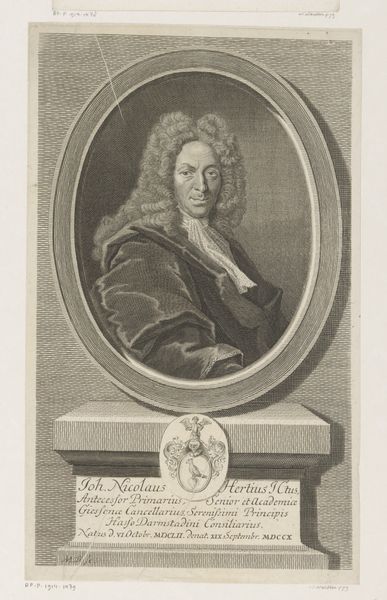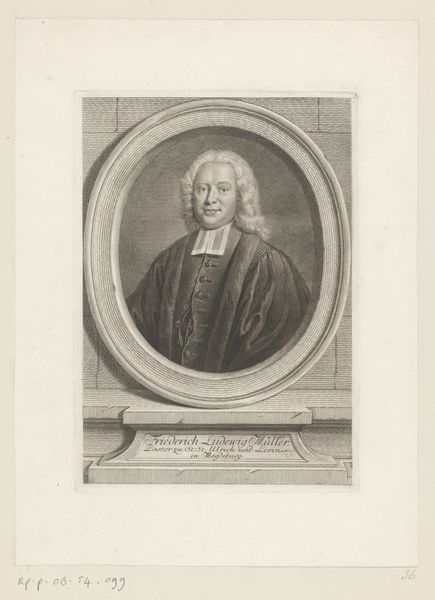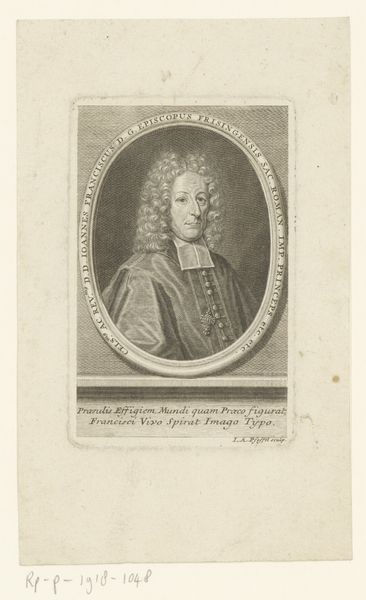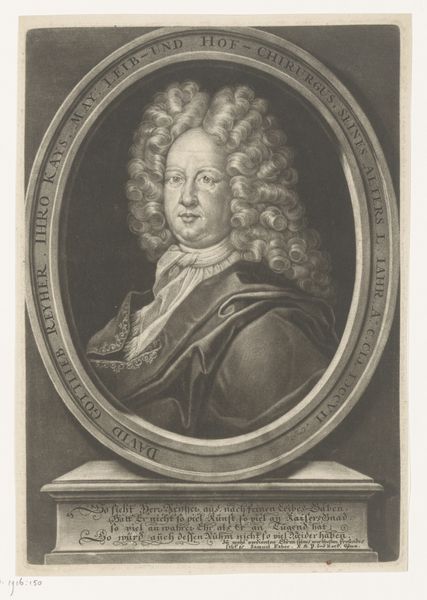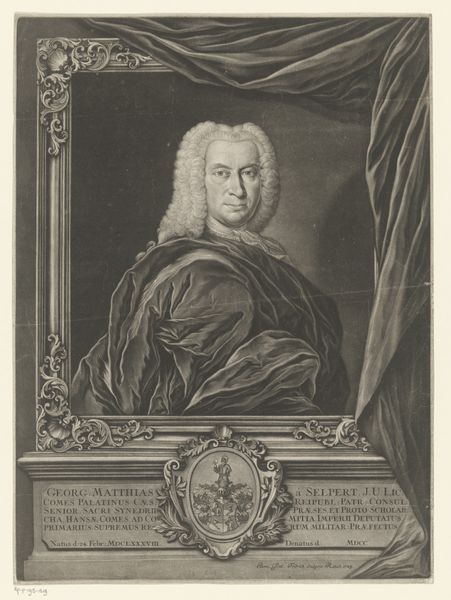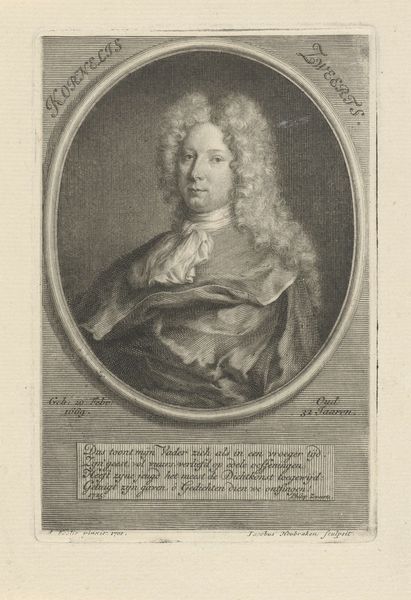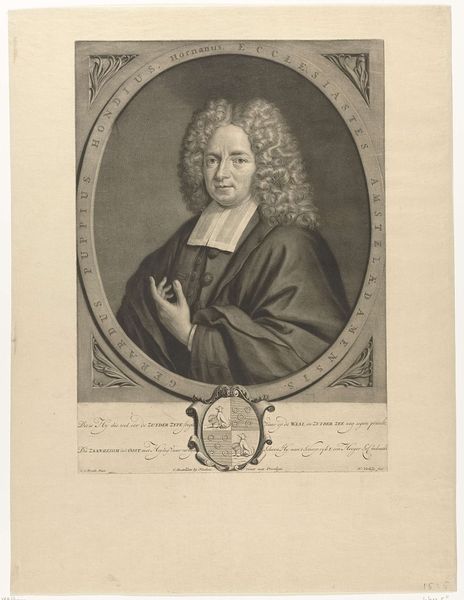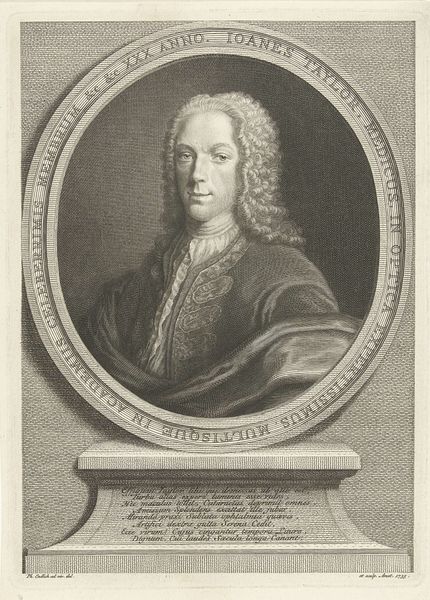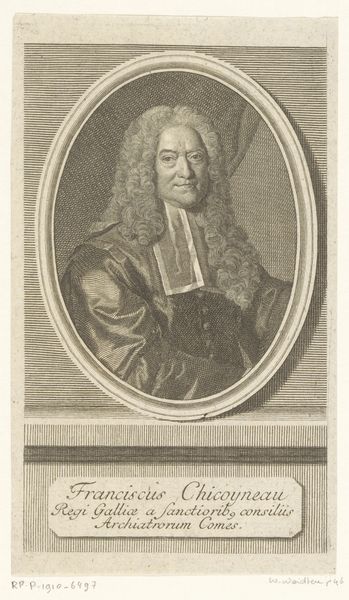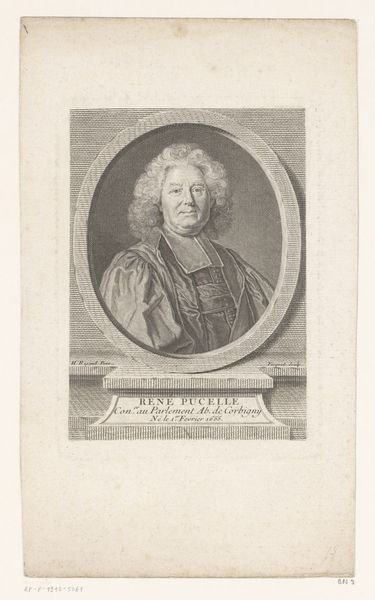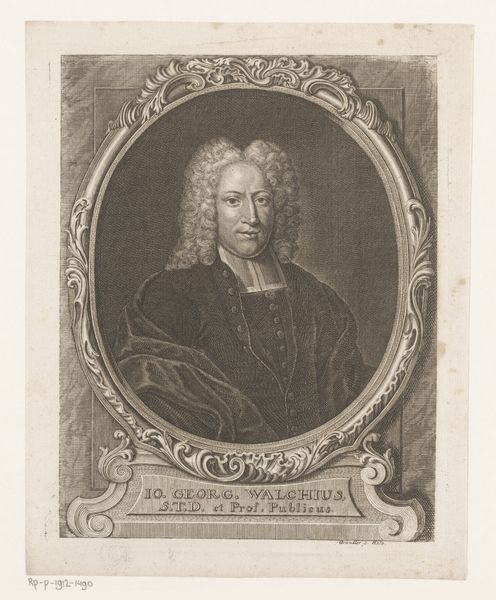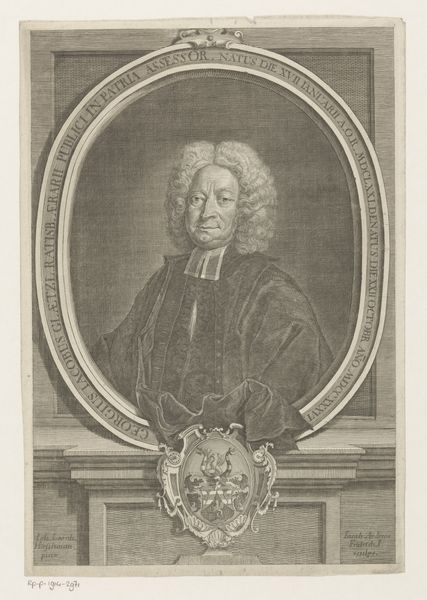
engraving
#
portrait
#
baroque
#
engraving
Dimensions: height 268 mm, width 186 mm
Copyright: Rijks Museum: Open Domain
Editor: This is "Portret van Salomon Graff," an engraving made in 1731 by Johann Wilhelm Stör. The portrait is quite formal, and the subject appears very self-assured, almost imposing. How do you interpret this work? Curator: I see this piece as a fascinating entry point into examining 18th-century social hierarchies and the construction of identity. Think about the Baroque style—it's all about grandiosity and power. Here, we see Graff enshrined within an oval frame, centered on a solid pedestal, and meticulously rendered. The formal composition reinforces existing power structures. Considering the portrait's function in society, how might this image of Graff serve to maintain his position within society? Editor: I suppose it visually affirms his status. The wig, the drapery...they all signal wealth and authority. It's like a carefully constructed performance. Curator: Exactly! And who was this performance for? Was it simply a personal memento, or did it serve a more public purpose? These portraits circulated, shaping public perception and reinforcing ideals. When looking at portraits like this, think about the labor involved and what social group had the privilege of commissioning such work. Consider the stories of those *not* included in these visual narratives and question whose stories were elevated at the expense of others. Editor: That's a really interesting way to think about it. It makes me consider all the voices we don't hear in these historical images. I hadn't really thought about the engraving process and what kind of identity it was producing. Thanks for the new perspective! Curator: It's crucial to analyze these visual narratives and question their inherent biases and implications. Engaging with art history from an intersectional perspective allows us to reveal its complex power dynamics.
Comments
No comments
Be the first to comment and join the conversation on the ultimate creative platform.
